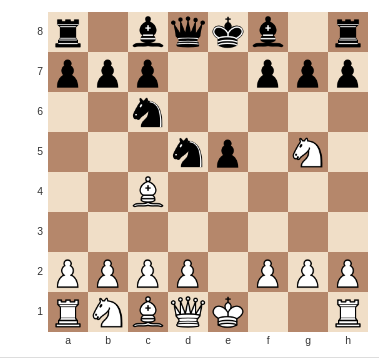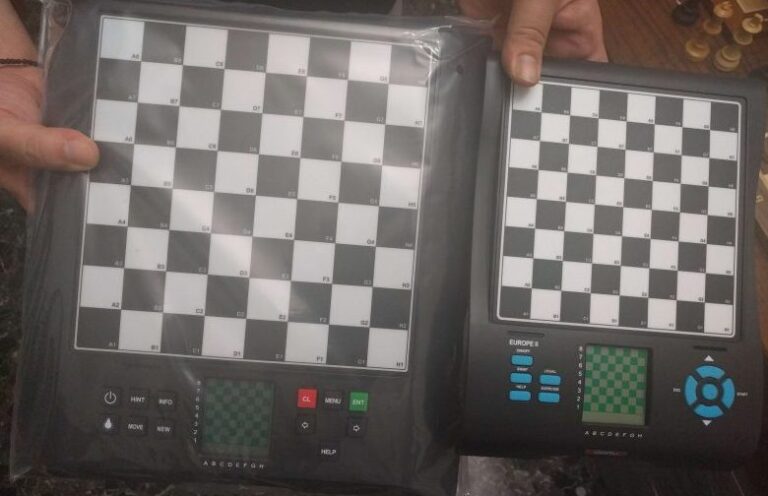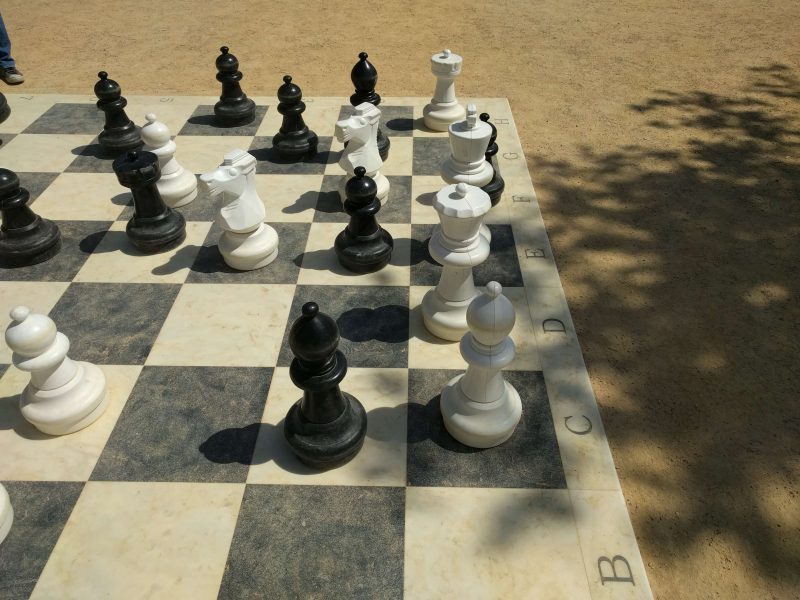Featured Posts
Recent Posts

How to Play Star Trek Chess & What Are the Best Sets In the Market
Star Trek is a popular franchise that has spawned numerous spinoffs and sequels throughout the years. A lot of merchandising based on Star

Best Chess Sets Under 100$ – 2023 Reviews
If you’re a chess enthusiast, you may wonder where to acquire a good set without breaking the bank. Read on for the best

Best Marvel Chess Sets – 2023 Reviews
The “Marvel Chess Set” is a must-have for any fan of the Marvel universe. This collectible set features iconic characters from the Marvel
Is Chess A Sport? Complete Guide, All Arguements of Each Side
Thousands of people play chess worldwide, but there has been a burning question for a long time regarding whether chess is a sport
Everything You Need To Know About Chess Boxing
Too impatient to watch a full game of chess? We might have a solution for you. Why don’t you tune into chess boxing?
The Best Ways To Display Etiquette & Sportsmanship in Chess
Chess is a gentleman’s game, so it’s only fitting that players display a level of sportsmanship to inspire goodwill. After all, it is

Best Chess Clocks of 2023 And Tips For Using Them (Analog & Digital)
Best Chess Clocks of 2022 And Tips For Using Them (Analog & Digital) Surely at some point in your life, you will have

The Ultimate Guide to Fried Liver Attack (Fegatello)
The number of possible moves in chess is overwhelming and players have a variety of openings and strategies to choose from because of

Top 10 Tips and Methods for Successful Chess Attacks in 2023
Some of you, who are reading this article, have faced an opponent that you couldn’t attack. Maybe from the beginning of the game,

Will We Watch Chess In The 2024 Olympics?
Chess is a game that needs thinking, strategy and passion. Despite the fact that there are millions of fans across the world because

How to Play Star Trek Chess & What Are the Best Sets In the Market
Star Trek is a popular franchise that has spawned numerous spinoffs and sequels throughout the years. A lot of merchandising based on Star Trek has

Best Chess Sets Under 100$ – 2023 Reviews
If you’re a chess enthusiast, you may wonder where to acquire a good set without breaking the bank. Read on for the best chess sets

Best Marvel Chess Sets – 2023 Reviews
The “Marvel Chess Set” is a must-have for any fan of the Marvel universe. This collectible set features iconic characters from the Marvel comics and
Is Chess A Sport? Complete Guide, All Arguements of Each Side
Thousands of people play chess worldwide, but there has been a burning question for a long time regarding whether chess is a sport or not.
Everything You Need To Know About Chess Boxing
Too impatient to watch a full game of chess? We might have a solution for you. Why don’t you tune into chess boxing? It combines
The Best Ways To Display Etiquette & Sportsmanship in Chess
Chess is a gentleman’s game, so it’s only fitting that players display a level of sportsmanship to inspire goodwill. After all, it is a game

Best Chess Clocks of 2023 And Tips For Using Them (Analog & Digital)
Best Chess Clocks of 2022 And Tips For Using Them (Analog & Digital) Surely at some point in your life, you will have seen these

The Ultimate Guide to Fried Liver Attack (Fegatello)
The number of possible moves in chess is overwhelming and players have a variety of openings and strategies to choose from because of this fact.

Top 10 Tips and Methods for Successful Chess Attacks in 2023
Some of you, who are reading this article, have faced an opponent that you couldn’t attack. Maybe from the beginning of the game, he had

Will We Watch Chess In The 2024 Olympics?
Chess is a game that needs thinking, strategy and passion. Despite the fact that there are millions of fans across the world because of those
HI, MY NAME IS GIANNIS

When I was a child I became obsessed with chess and I continued to play ever since. Despite some obligations of my professional life, I always find time to play chess along with my wife, children, and friends. I have applied many strategies, used many chess sets and met some of the greatest GMs in the World. I started this website with a vision to offer for free quality information to chess enthusiasts. The content of this website is written by me and some of my friends that have exceeded an ELO rating of 2000.
Thank you for visiting my website.
HI, MY NAME IS GIANNIS

When I was a child I became obsessed with chess and I continued to play ever since. Despite some obligations of my professional life, I always find time to play chess along with my wife, children, and friends. I have applied many strategies, used many chess sets and met some of the greatest GMs in the World. I started this website with a vision to offer for free quality information to chess enthusiasts. The content of this website is written by me and some of my friends that have exceeded an ELO rating of 2000.
Thank you for visiting my website.







